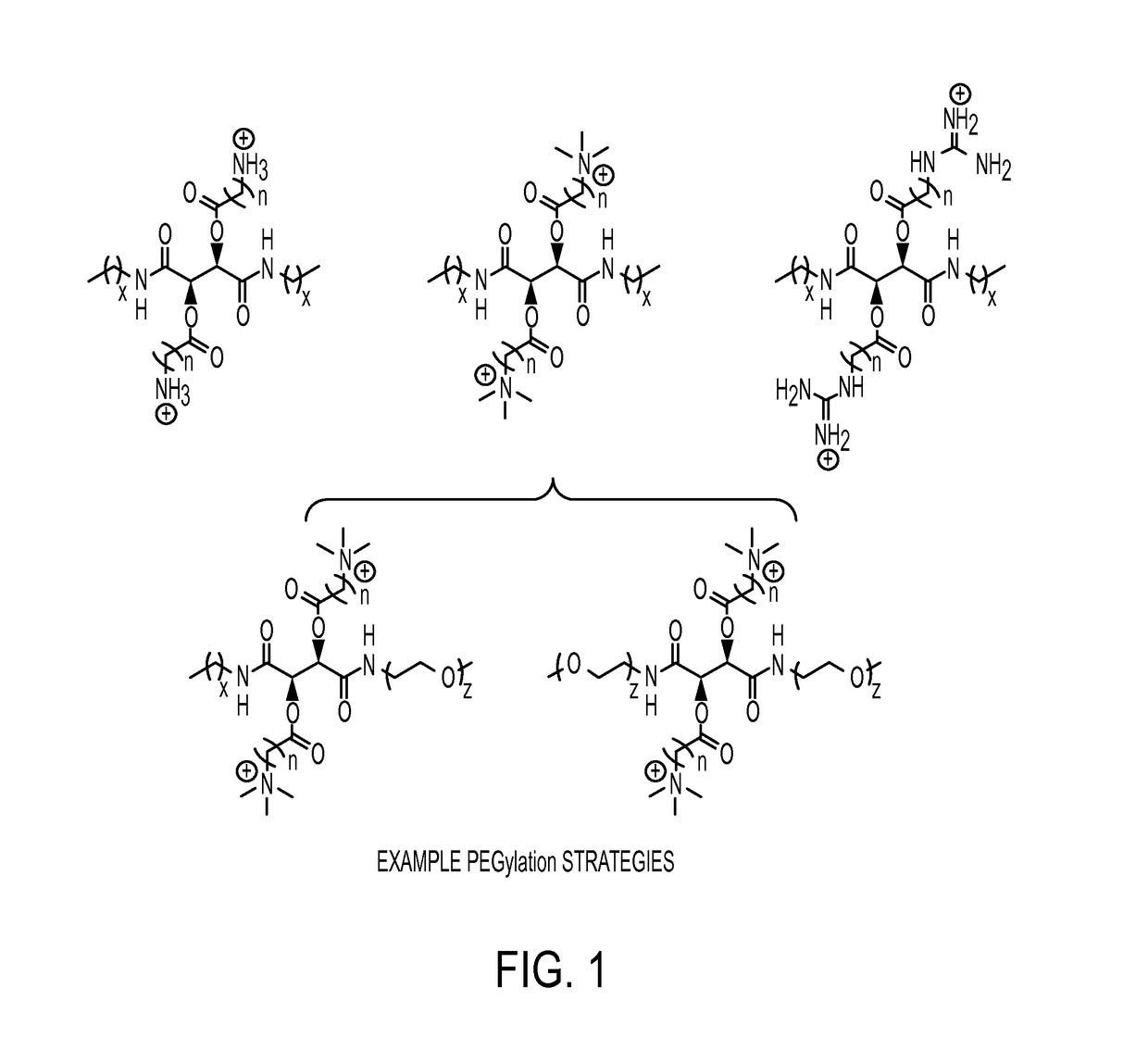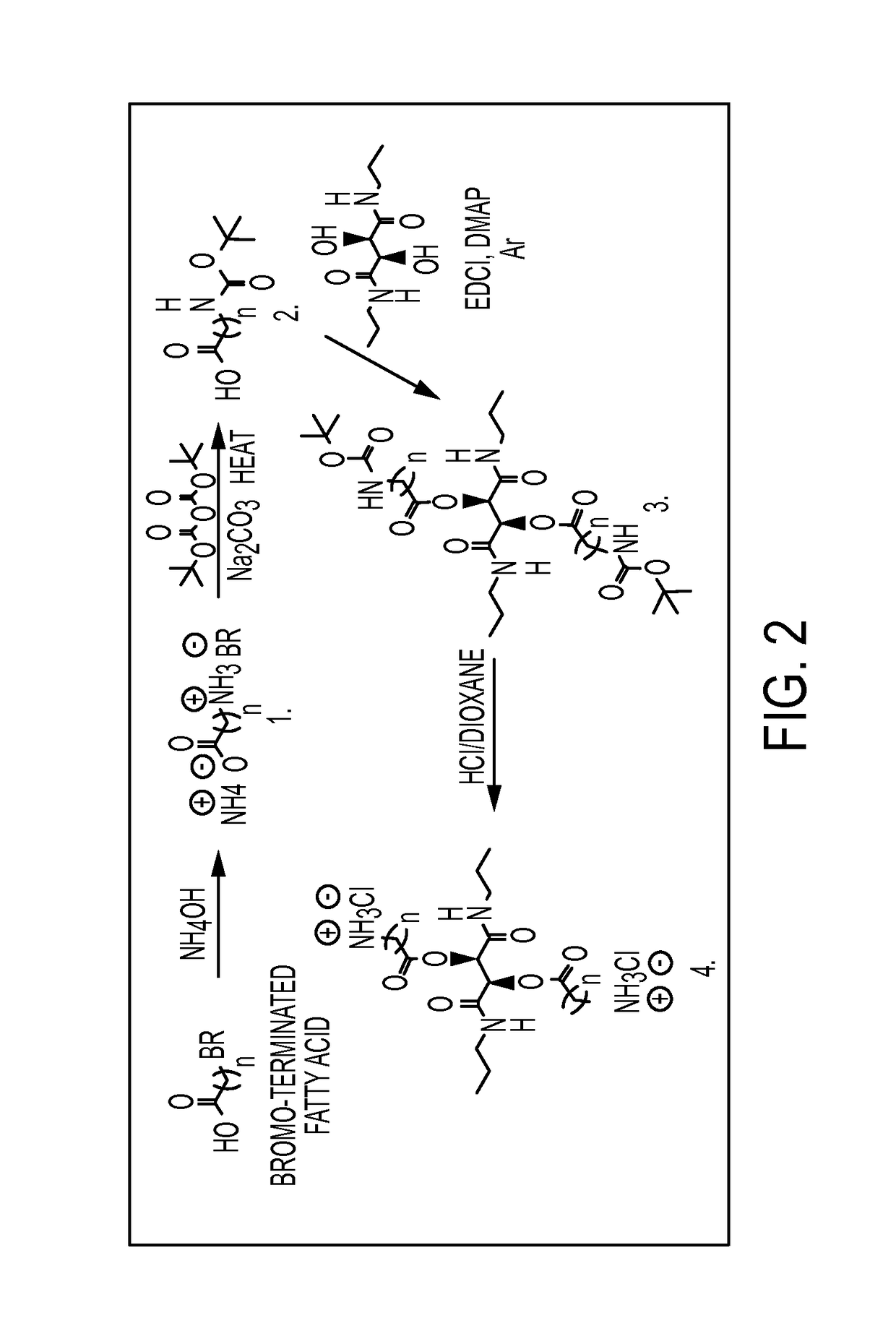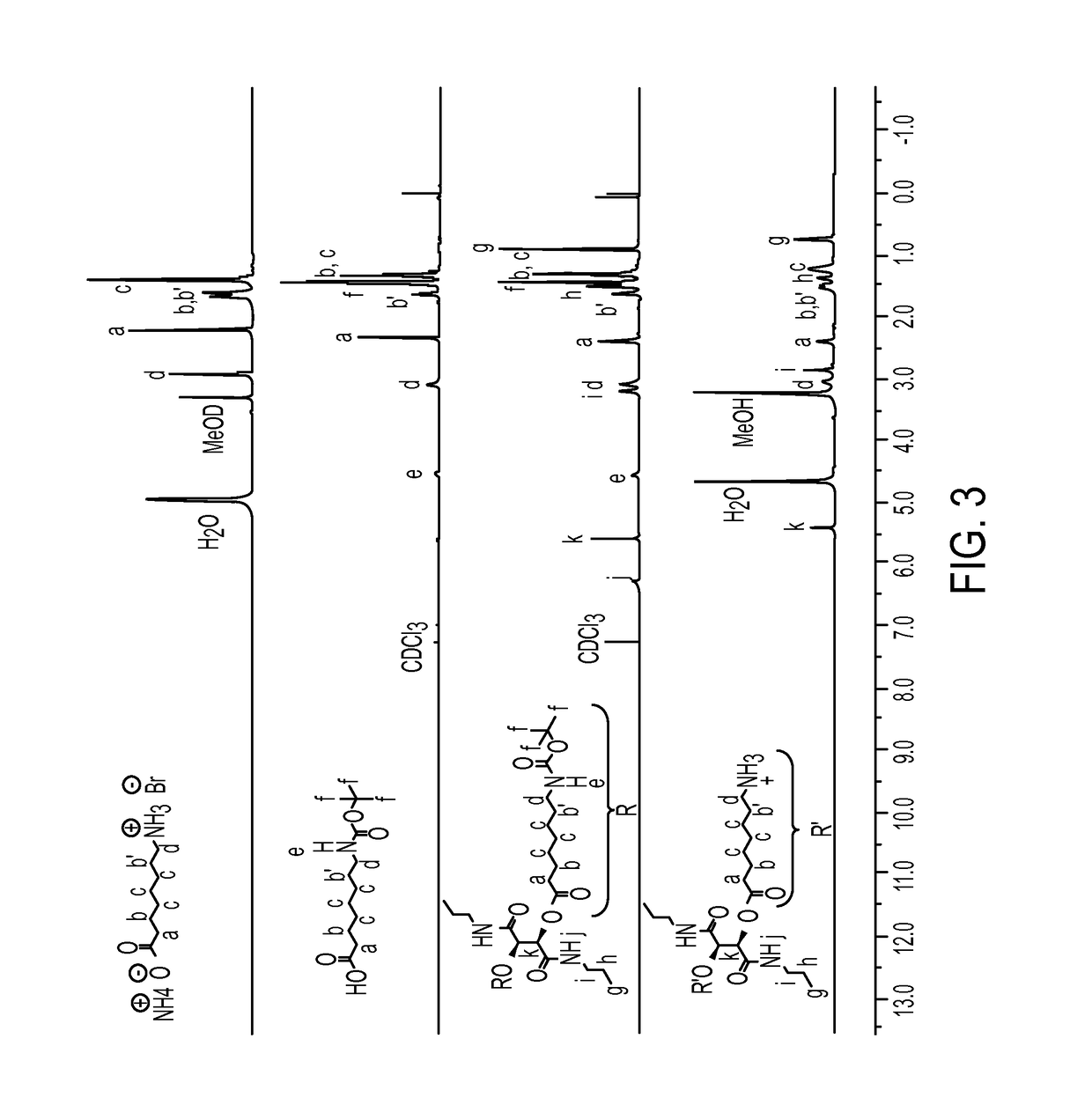Antibacterial agents
- Summary
- Abstract
- Description
- Claims
- Application Information
AI Technical Summary
Benefits of technology
Problems solved by technology
Method used
Image
Examples
example 1
Test A.
[0171]MIC / MBC studies were conducted according to a modified literature procedure (LaDow J E, et al. European Journal of Medicinal Chemistry. 46 (2011) 4219-4226). In brief, stock amphiphile solutions were made in lmL double-distilled water (0.1M C8 and C10; 0.02M C12), filter sterilized, and sonicated for five minutes. Stocks were then diluted 100×in tryptic soy broth and vortexed. This broth was serially diluted in fresh broth and 100 μL “doped” broth was transferred to 96-well microtiter plate. 106 Cfu / mL inoculums were prepared for E coli and S. aureus. 100 μL inoculum was added to the wells. Plates were put on a shaker for 5 minutes to mix inoculum and broth. Plates were incubated at 37° C. overnight. Wells were visually analyzed the next day by growth or no growth. After MICs were determined, aliquots were taken from each well, plated, and incubated to determine the MBC values for each compound. MBC values were defined as killing of >99.9% of the organisms, which corres...
example 2
Biscationic Tartaric Acid-Based Amphiphiles: Charge Location Impacts Antimicrobial Activity
[0177]As described herein, two series of cationic amphiphiles, termed bola-like and gemini-like amphiphiles, were synthesized with analogous hydrophobic-to-charge ratios but differing charge location and their resulting antibacterial activity assessed. Bola-like amphiphiles exhibited preferential activity against two gram-positive bacteria, with activity increasing with increasing hydrophobicity, whereas gemini-like amphiphiles were active against both gram-positive and gram-negative bacteria, with activity decreasing with increasing hydrophobicity. After identifying compounds from each amphiphile series (bola- and gemini-like), biophysical experiments indicated that both amphiphiles were membrane-active; notably, the gemini-like amphiphile (G7) exhibited a strong dependence on electrostatic interactions for membrane interaction. In contrast, the bola-like amphiphile (B11) exhibited a reliance...
example 3
Antimicrobial Amphiphiles with Enhanced Activity
[0224]The antimicrobial activity of the G7, G9 and B11 amphiphiles against a variety of bacterial species was evaluated using MIC studies. Specifically, Standard CLIS / NCCLS broth microdilution assays were utilized for both BSL2 and BSL3 organisms in a 96-well format ((CLSI / NCCLS) CaLSI. Methods for antimicrobial susceptibility testing of aerobic bacteria: Approved standard. Wayne, Pa.: CLIS, 2007; (CLSI / NCCLS) CaLSI. Methods for dilution antimicrobial susceptibility tests for bacteria that grow aerobically; Approved standard. Wayne, Pa.: CLIS, 2009). The compounds were diluted at 32 mg / mL to 0.125 mg / mL in 2-fold dilutions performed in triplicate. The time course of killing was established by evaluating viability after exposure to compound after 18 hours. The MIC is defined as the lowest concentration of compound that confers a no-growth phenotype as noted by the naked eye. These studies demonstrate broad spectrum activity and impact o...
PUM
| Property | Measurement | Unit |
|---|---|---|
| Antimicrobial properties | aaaaa | aaaaa |
Abstract
Description
Claims
Application Information
 Login to View More
Login to View More - R&D
- Intellectual Property
- Life Sciences
- Materials
- Tech Scout
- Unparalleled Data Quality
- Higher Quality Content
- 60% Fewer Hallucinations
Browse by: Latest US Patents, China's latest patents, Technical Efficacy Thesaurus, Application Domain, Technology Topic, Popular Technical Reports.
© 2025 PatSnap. All rights reserved.Legal|Privacy policy|Modern Slavery Act Transparency Statement|Sitemap|About US| Contact US: help@patsnap.com



